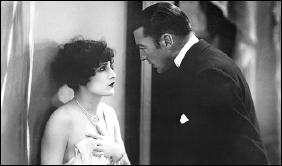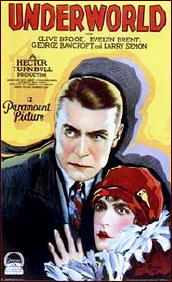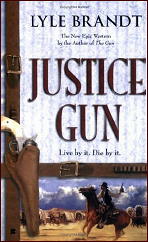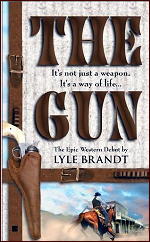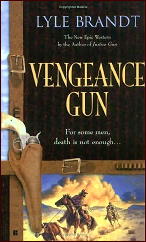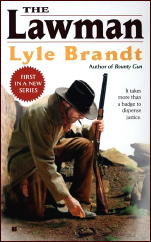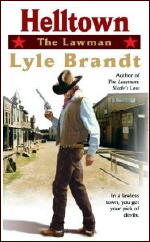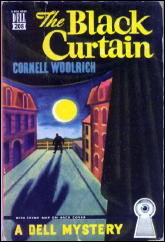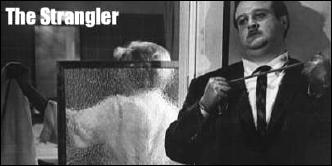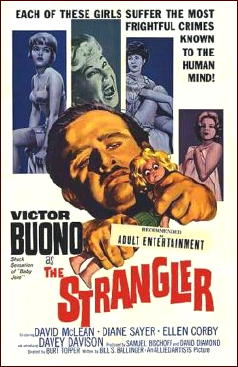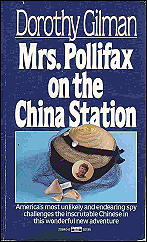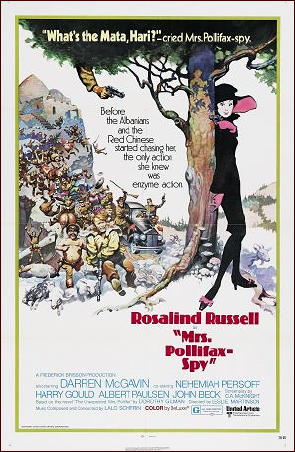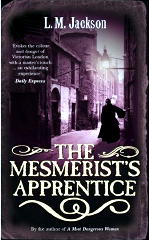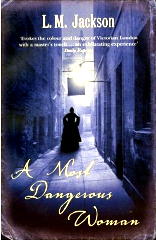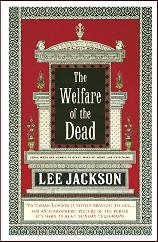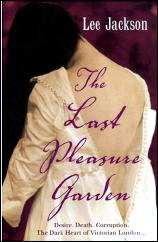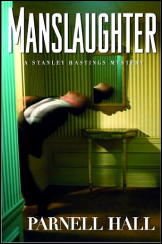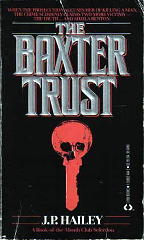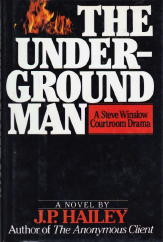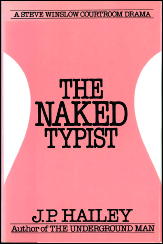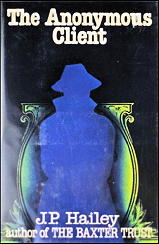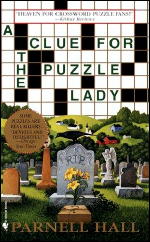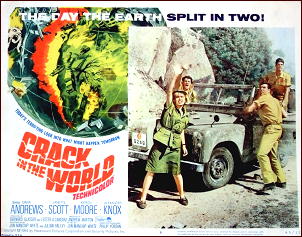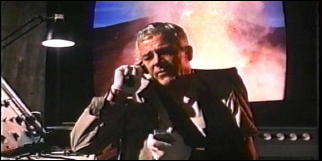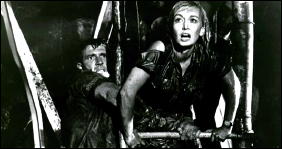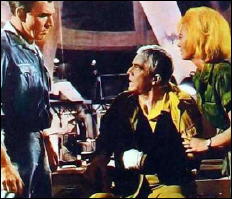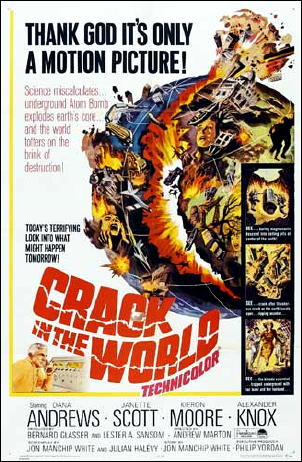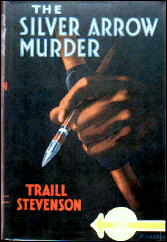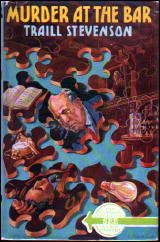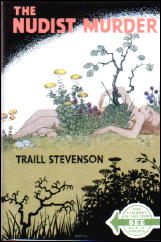Dear Steve,
Greetings from a total stranger. I wonder if you can spare me a few minutes of your time and some of your expertise.
I am a keen reader of the “man on the run” type of thriller novel. As you know, this is a sub genre where a person, usually male, finds himself pursued by a deadly enemy for most of the book. He has to elude his opponent in clever and creative ways before finally confronting him/ it/ them. I particularly like wilderness or countryside settings for these pursuits rather than urban ones.
I have read the few classic examples that I know of: Household’s Rogue Male, Watcher in the Shadows and Dance of the Dwarfs, and Buchan’s The Thirty-Nine Steps come to mind.
Now comes the inevitable question: do you know of any bibliographies or reading lists for this kind of thriller, or can you suggest some more authors and titles I should seek out?
Thank you in anticipation, — D.
I passed the question on to David Vineyard, who quickly responded with the list that follows. — Steve
As a lover of the man on the run thriller myself, I’m glad to say there is quite a bit on it to be found at various sources.
To begin with, look up a book called The World of the Thriller, by Ralph Harper. Harper was a British minister (religious kind, not political) and his book is mostly dedicated to the man on the run style thriller. There is also a good article on the subject in Dilys Winn’s Mystery Ink. The subject comes up in some of the books on the spy novel, too, since it is closely related. .
Below I’ve done a sort of annotated list that deal with the subject in general. Generally it’s a British thing, but a few Americans, South Africans, and Canadians have contributed too.
The first use of the man on the run theme was William Godwin’s (Mary Shelly’s father) Caleb Williams, the story of a man framed by his employer who ends up befriended by outlaws before clearing his name, though you could easily say the genre began with Homer and The Odyssey. Odysseus the man pursued by fate and the gods.
Before Buchan came along, the model was established by Robert Louis Stevenson with Kidnapped, Catriona (sequel to Kidnapped), St. Ives (the story of an escaped Napoleonic soldier in England), and the novella “Pavillion on the Links.”
Conrad also touches on it in his novel, The Rover, about a Frenchman who has to sink a British blockade ship during the Napoleonic wars. Elements of it figure in books like The Prisoner of Zenda, A.E.W. Mason’s The Four Feathers, and of course Victor Hugo’s Les Miserables.
The Power House by John Buchan (1910) generally considered the first of the form and called by Graham Greene the first modern spy novel. Most of the pursuit is in London, but historically important.
Prester John — a young man in Africa falls in with a hypnotic African leader who plots a bloody uprising.
Mr. Standfast/Greenmantle/The Three Hostages/Island of Sheep — the adventures of Richard Hannay — all featuring the man on the run theme to one extent or the other.
A Prince of the Captivity — stand alone novel by Buchan about a British agent who sets out to find a man he believes can save society from the dangers of fascism. Good details of his actions in WWI as an undercover agent, a rescue in the arctic, and a chase across the Alps pursued by Storm Troopers.
Also by Buchan and touching the theme, The Dancing Floor, John McNab, Huntingtower, Castle Gay, House of the Four Winds and the historical novels Salute to Adventurers, Blanket of the Dark, and The Free Fishers.
Also:
Riddle of the Sands by Erskine Childers — prophetic novel of two men who uncover a German plot to invade England prior to WWI.
Brown on Resolution by C.S. Forester — a British sailor with a rifle holds a German raider at bay on a desert island while the crew hunts him. Also a film as Sailor of the King.
The Great Impersonation by E. Phillips Oppenheim — a British nobleman in Africa is replaced by a German agent on the eve of WWI — or is he?
Francis Beeding — best known today for the book that became Hitchcock’s Spellbound, his series about Col. Alistair Granby are often of the man on the run variety. The Five Flamboys.
Valentine Williams — his novels featuring the German spy Clubfoot are often as not chase and pursuit novels with the British hero a hunted spy in Germany.
Household — virtually all of his books are on this theme — other than the ones you mention try The High Place, The Fifth Passenger (a humorous take), A Time to Die, A Rough Shoot, The Courtesy of Death, The Sending, and Red Anger.
Hammond Innes — the king of the British adventure story in the fifties — all of his novels are outdoor adventure with one man against the odds. The Wreck of the Mary Deare, Atlantic Fury, Blue Ice, White South, Campbell’s Kingdom, The Strode Venturer, Levkas Man.
Gavin Lyall — his early novels are much in the Innes mode with a touch of Eric Ambler — The Most Dangerous Game, Shooting Script, Venus With Pistol, Midnight Plus One. His later books are more often spy novels.
Desmond Bagley — South African writer in the Innes/Alistair MacLean mode — The Vivero Letter, High Citadel (a group of people stranded by a plane crash hunted by a South American army), Freedom Trap (filmed as MacIntosh Man), Running Blind, many more.
Wilbur Smith — several of his novels deal with the theme including A Time to Kill, Shout at the Devil, and The Diamond Hunters.
Others:
Alistair MacLean — particularly the books Guns of Navarone, Night Without End, Fear is the Key, The Secret Ways, The Satan Bug, South By Java Head, When Eight Bells Toll, The Black Shrike
Duncan Kyle — Black Camelot, others
Anthony Trew — South African writer — variations on the theme
Mary Stewart — My Brother Michael, The Gabriel Hounds, Moonspinners, Wildfire at Midnight — romantic suspense, but with a strong Buchan/Hitchcock theme
Geoffrey Jenkins —South African writer — River of Diamonds, A Twist of Sand, A Grue of Ice, Hunter Killer
Douglas Orgill
Steve Frazee (Sky Block and Run Target)
Charles Williams (Man on the Run)
Q. Patrick (Man in the Net)
James Goldman (The Man From Greek and Roman)
Graham Greene (The Man Inside)
David Garth (most titles)
Edward Abbey (The Brave Cowboy — a modern cowboy in New Mexico flees across the Sangre de Cristos — filmed with Kirk Douglas and Walter Matthau as Lonely Are the Brave)
Gavin Black (the Paul Harris series)
Alan Furst (most of his novels feature protagonists who find themselves hunted by the Nazi’s)
Ethel Vance — Escape (an American has to save his German mother from the Nazi’s)
Helen MacInnes — the best woman writer of the genre — Above Suspicion, Assignment in Brittainy, Horizon, Pray for a Brave Heart, more
Martha Albrand — another woman with a taste for the man on the run theme
Dornford Yates — Storm Music, Cost Paid, She Fell Among Thieves — his heroes are usually on the run from the villains while hunting a treasure in some remote European location
Allan Caillou — actor and writer — many of his books are on the theme — Journey to Orassia, Rampage (a film with Robert Mitchum)
Ted Willis — Man Eater about a man hunting a man eating Tiger on the loose in rural England, Buckingham Palace Connection — a Brit in revolutionary Russia tries to save the Royal family
Victor Canning — one of the greats. Any of his books.
David Dodge — Plunder of the Sun, The Red Tassel, The Long Escape, To Catch a Thief, Angel Ransom
David Walker — Harry Black and the Tiger
John Masters — The Breaking Strain, Himalayan Concerto, Far Far the Mountain Peak, Lotus in the Wind — many of his novels feature the hero in classic chase and pursuit while others are more historical or adventure writers.
Berkely Mathers — The Achilles Affair, Without Prejudice (Mather co-wrote the screenplay of Dr.No) others.
Elleston Trevor — variations on the theme — also Adam Hall, many of the Quiller books have him on the run and alone — in fact most of them.
Nevil Shute — some of his novels follow the theme — So Disdained, Most Secret, Trustee in the Toolroom
Ernest Gann — variations on the theme particularly in Soldier of Fortune, Band of Brothers, The Aviator
Lawrence Durrell — White Eagles of Serbia a juvenile novel
Geoffrey Rose — A Clear Road to Archangel, No Road Home — outstanding and too little known in the US
Alan Williams — False Beards, Snake River, Holy of Holies.
Francis Clifford — Act of Mercy, The Naked Runner, more
Eric Ambler — Background to Danger, Epitaph for a Spy, Journey Into Fear, Cause for Alarm, The Schirmer Inheritance, A Kind of Anger, The Light of Day, Dr. Frigo
Jack Higgins — most of his books before The Eagle Has Landed fit the bill.
John Willard — The Action of the Tiger
Allan Dipper
Rupert Hart-Davis — The Heights of Rim Ring, Level 7
John Welcome — Run For Cover, Before Midnight good thrillers in the adventure vein
Archie Roy — Brit scientist whose books are often in the chase and pursuit vein of Buchan.
P.M. Hubbard — Kill Claudio — most of his books. Well worth finding. Similar to Household but not imitative.
Fred Hoyle — Buchanesque sf novel Ossian’s Ride.
L.P. Davies — some sf some thriller some mix the two. His heroes are frequently trying to find their identity while pursued by some threat
John Christopher— same mix
Desmond Cory — his hero Johnny Fedora often on the run from spies and the law
Michael Gilbert — some of his books fall into the genre such as The Etruscan Tomb, The Long Journey Home, The 92nd Tiger, Danger Route (based on his escape from an Italian POW camp in WW II).
Andrew Garve — some of his many novels fall into the category — Two if by Sea, Ascent of D-13, The Megstone Plot
Philip Loraine — Brit thriller writer and screenwriter — Dead Men on Sestos, Nightmare in Dublin, Break in the Circle.
Alan MacKinnon — hard to find but well worth it.
Donald Mackenzie — before his John Raven series his novels often featured small time crooks on the run from police and other crooks or spies.
Donald Hamilton — his non series novels, and even many of the Matt Helms fall into the general category.
Edward S. Aarons — Girl on the Run, chase for lost treasure in post war France
Frank Gruber — Bridge of Sand, Brothers of the Sword excellent Ambleresque adventures
Lionel Davidson — one of the best ever — Rose of Tibet, Night of Wenecslas, The Menorah Men, The Sun Chemist, Kolmsky Heights (read this one), Smith’s Gazelle
James Aldridge — The Statesmen’s Game, A Captive in the Land
George Macdonald Fraser — most of the Flashman novels feature Flashy hunted and pursued on all sides — very funny, and also the adventure novel done right.
Bernard Cornwell — several good modern thrillers and the Richard Sharpe series which often finds Sharpe and his friend Sgt. Harper hunted and on the run from Napoleon’s army and other enemies.
Mark Derby — hard to find, but good adventure thriller writer from the fifties and early sixties usually in the chase and pursuit vein.
Anthony Horowitz — his juvenile Alex Rider series often finds his young hero alone and on the run from his enemies — well written and not just for young readers.
Barry England — Figures in a Landscape — forget the awful movie — two men escape a brutal prison and flee across desert and mountains. A bit too literary, but well done.
Jon Manchip White — Nightclimber, Game of Troy — fine examples of the theme with almost Poe like touches.
Peter O’Donnell — you’d be surprised how often Modesty Blaise and Willie Garvin end up alone and hunted on all sides. Notably in Sabre-Tooth, A Taste for Death, The Impossible Virgin, The Last Day in Limbo, Night of Morning Star.
Norman Lewis — travel writer and adventure novelist. In real life escaped from an Italian POW camp in WW II with Michael Gilbert so he knows whereof he writes.
Anyway, these will lead you to many others. Considering how simple the theme is, the variations are endless.
David Vineyard
